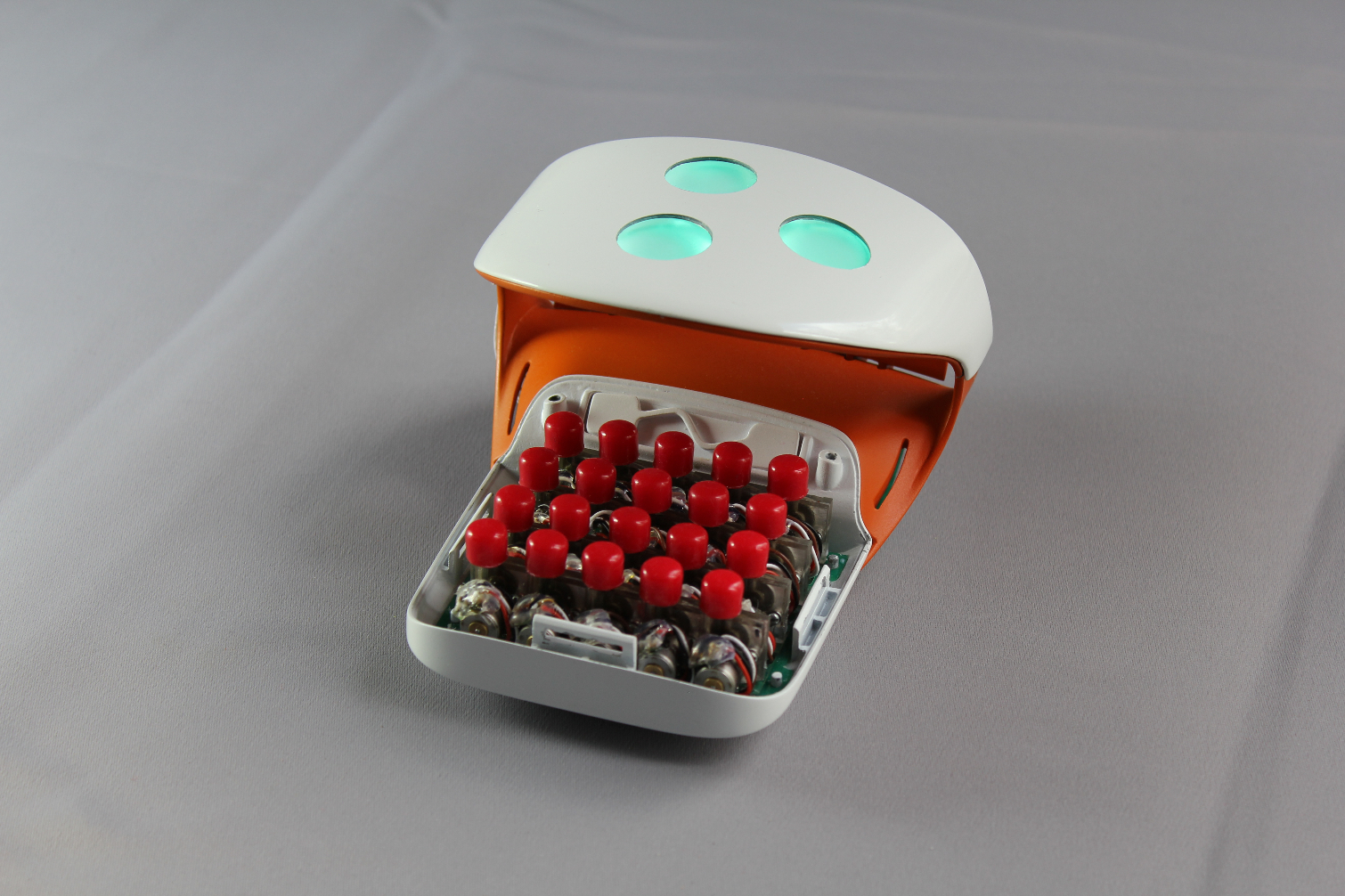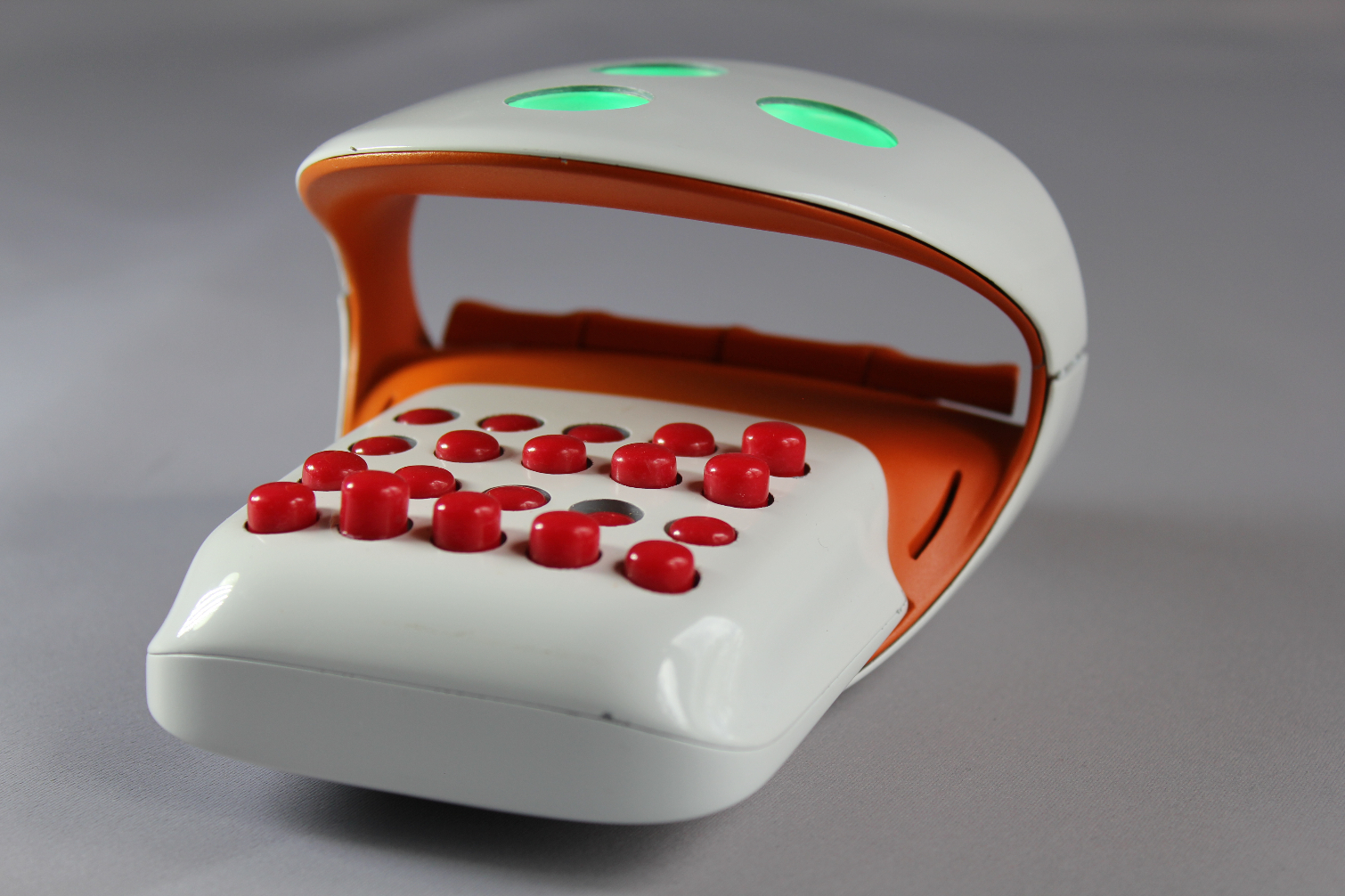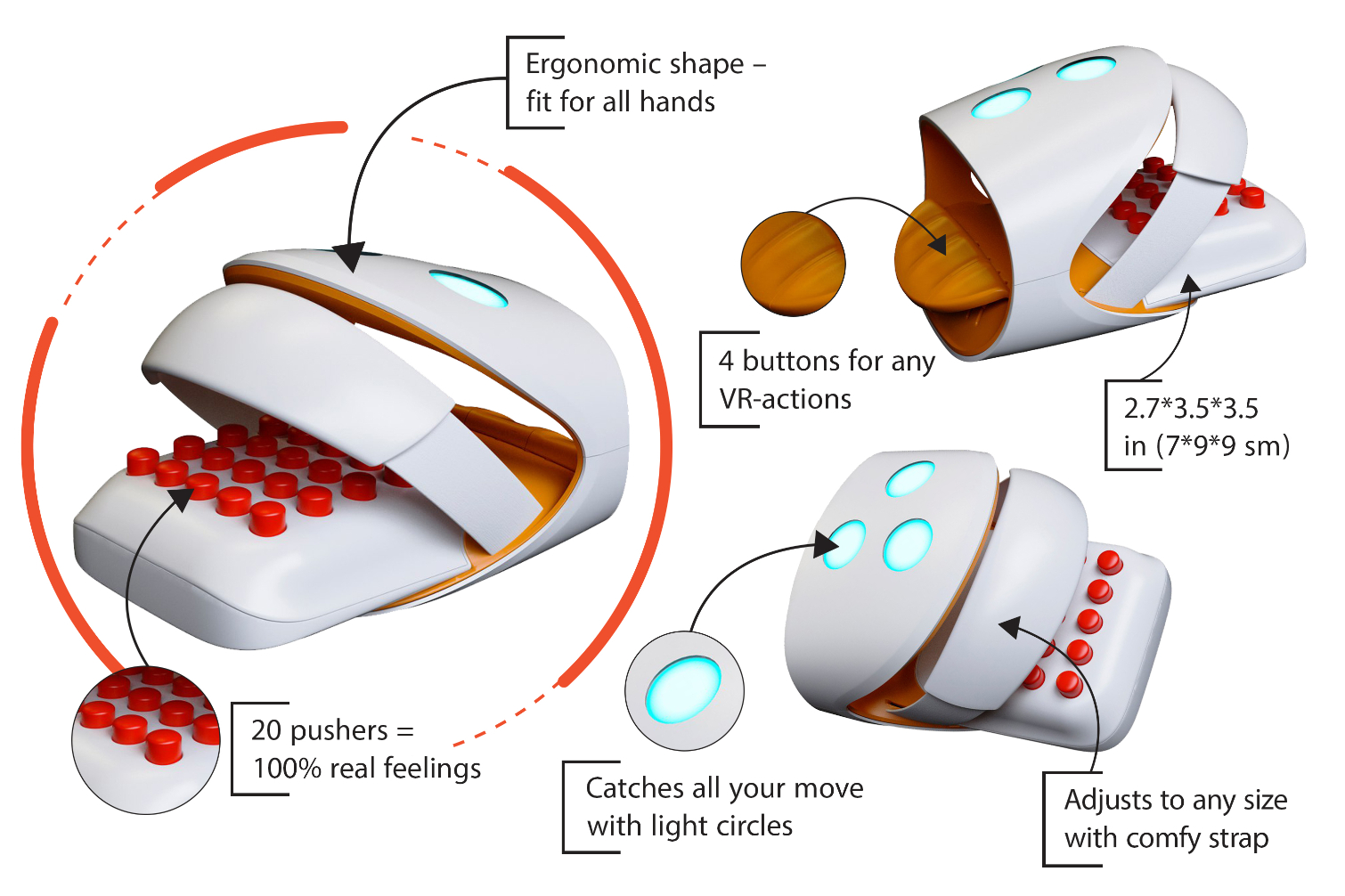Hapto Brings Real Haptic Feeling To Your Hands In VR
Hapto is a new peripheral that takes haptic feedback to a new level. Forget rumble motors and linear resonant actuators; Hapto features mechanical “pushers” that replicate the feeling of physical objects.
Today’s virtual reality hardware and experiences are impressive, and some are good enough to fool your brain into believing in the illusion temporarily, but we’re a long way from the holodeck. The Vive, Rift, and PSVR offer passable visual experiences and believable auditory experiences, but our three remaining senses don’t fit into the current picture. Technology exists that can reproduce virtual smells (do we really want that?), but not in a practical sense. And as far as we know, virtual taste bud stimulation isn’t coming anytime soon. But being able to feel the virtual world is a lot more useful than being able to taste it, anyway, and that's what Hapto seeks to offer.
Haptic feedback in games isn’t a new concept. Game controllers have used different forms of rumble sensation since the '90s when Nintendo introduced the Rumble Pak accessory for the N64 controller. Hapto takes a dramatically different approach to the problem, though. The Hapto VR controller doesn’t rumble; it “pushes.”




The Hapto controller features 20 mechanical actuators that Hapto calls “Pushers,” which replicate the tactile feeling of physical objects. The “Pushers” move up and down to correspond with the shape of an object in a virtual experience. Hapto said it developed its technology to exploit the “way our brains understand what we’re touching.” The way Hapto stimulates your hands is designed to accurately replicate the feel of familiar objects.
“Hapto is meant to give mankind the possibilities we have all barely dreamt about. It’s the sci-fi world come true,” said Alexander Khromenkov, CEO, and Founder of Hapto. “For many years, we studied all the medical research on how the human brain ‘forms’ tactical feelings. Once we understood that, we created a system that fully reproduces the impact from touching this or that object. You simply put Hapto on, start a game or an app, and get such a realistic haptic effect that you may even forget you’re in virtual reality.”
The Hapto controller features an ergonomic, ambidextrous design that should be suitable for large and small hands alike. The controller also features a strap to ensure you won’t throw the controller across the room in an active VR game.
The Hapto controller features four input buttons for your fingertips. Hapto also offers motion control through a combination of camera tracking and sensor tracking. The top of each Hapto controller has three glowing LED lights that can be tracked with your smartphone camera or webcam. The controller also includes a gyroscope and an accelerometer to compensate for positioning if the camera loses sight of the controller.
Get Tom's Hardware's best news and in-depth reviews, straight to your inbox.
Hapto isn’t targeting a specific VR platform here. The company is taking a blanket approach and embraced every platform it could. The controller works with mobile VR devices, such as Samsung’s Gear VR, Google’s Daydream and Cardboard platforms, and the Merge VR Goggles. Hapto is also aiming at the desktop PC market with support for HTC Vive and Oculus Rift. The company announced that Sony PlayStation VR support, OSVR support, Microsoft HoloLens support, and Apple iOS support are in the pipeline.
Hapto also said that its SDK is available for developers to integrate Hapto support into their creations.
Hapto's controller isn’t available yet, but you can put your name and money down for one through Indiegogo. During the campaign, you can purchase a controller for $149, and the suggested price will rise to $249 when the campaign is over.
Visit Hapto’s website for more information and a link to the Indiegogo page.
Kevin Carbotte is a contributing writer for Tom's Hardware who primarily covers VR and AR hardware. He has been writing for us for more than four years.
-
cryoburner I like the idea of feedback devices that provide more accurate touch sensations, but this implementation seems like it would need a lot of work. For one, it looks rather unwieldy. Those controllers would make it impossible to hold a headset's standard motion controllers at the same time, so you would be reliant on games supporting its limited four-button controls. Those buttons seem kind of awkwardly positioned as well, not actually under your fingertips, but under the base of your fingers.Reply
And since there's nothing under your fingertips, that means there would be no haptic feedback of any sort applied to your fingertips. When you pick up or touch an object, you'll typically be doing so more with your fingers than with the palms of your hands. And for larger objects that might potentially press against your palms, the device provides no way of restricting your movement to prevent you from clipping through them. How does one get the impression that they are touching a larger object when their hands pass right through it? In order to prevent such clipping though, you would need to physically restrict movement of the arms, which would likely mean some form of over-shoulder robotic exoskeleton, which might not be entirely practical for home use. So a device like this really should focus more on providing feedback to the fingertips for small-object interactions more than anything.
Additionally, this device is something that will almost certainly require developer support to function, and it doesn't exactly look like a feature that would be particularly simple to implement well in a game. The game needs to simulate the feel of objects, and that's going to be more complicated than just performing a bunch of collision checks with their 3D models. You would also likely need to assign special material properties to objects, since, for example, a fluffy dog shouldn't feel the same as a statue of a fluffy dog.
I just can't see this device getting any developer support beyond a handful of tech demos, and as such, I can't really see it taking off. For a touch feedback device like this, something like a more-flexible glove format with smaller "pushers" would probably work better.


